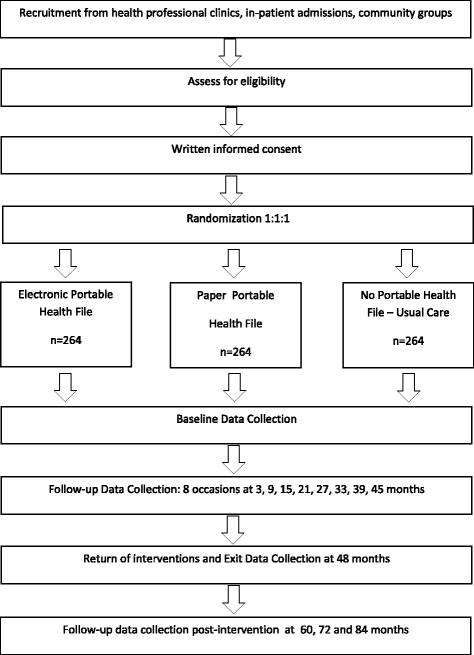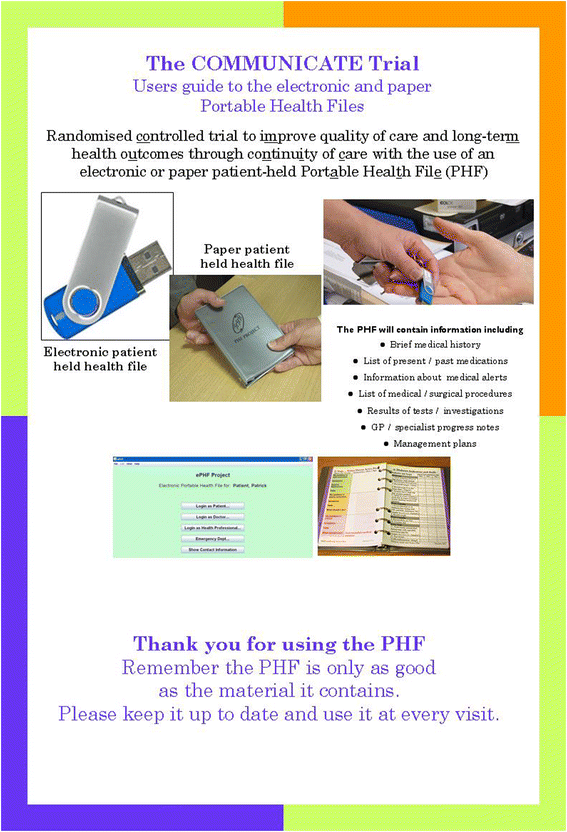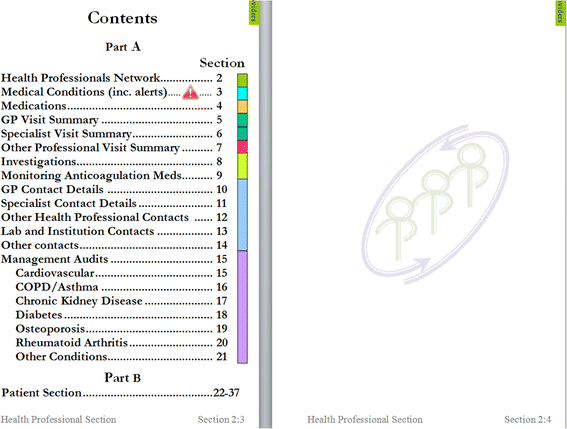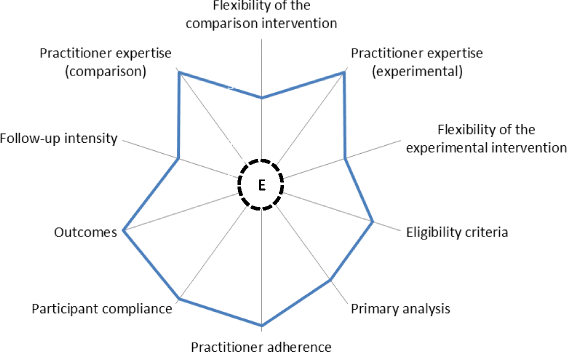Improving quality of care and long-term health outcomes through continuity of care with the use of an electronic or paper patient-held portable health file (COMMUNICATE): study protocol for a randomized controlled trial
- PMID: 26040644
- PMCID: PMC4473843
- DOI: 10.1186/s13063-015-0760-8
Improving quality of care and long-term health outcomes through continuity of care with the use of an electronic or paper patient-held portable health file (COMMUNICATE): study protocol for a randomized controlled trial
Abstract
Background: The advantages of patient-held portable health files (PHF) and personal health records (PHR), paper or electronic, are said to include improved health-care provider continuity-of-care and patient empowerment in maintaining health. Top-down approaches are favored by public sector government and health managers. Bottom-up approaches include systems developed directly by health-care providers, consumers and industry, implemented locally on devices carried by patient-consumers or shared via web-based portals. These allow individuals to access, manage and share their health information, and that of others for whom they are authorized, in a private, secure and confidential environment. Few medical record technologies have been evaluated in randomized trials to determine whether there are important clinical benefits of these interventions. The COMMUNICATE trial will assess the acceptability and long-term clinical outcomes of an electronic and paper patient-held PHF.
Methods/design: This is a 48-month, open-label pragmatic, superiority, parallel-group design randomized controlled trial. Subjects (n = 792) will be randomized in a 1:1:1 ratio to each of the trial arms: the electronic PHF added to usual care, the paper PHF added to usual care and usual care alone (no PHF). Inclusion criteria include those 60 years or older living independently in the community, but who have two or more chronic medical conditions that require prescription medication and regular care by at least three medical practitioners (general and specialist care). The primary objective is whether use of a PHF compared to usual care reduces a combined endpoint of deaths, overnight hospitalizations and blindly adjudicated serious out-of-hospital events. All primary analyses will be undertaken masked to randomized arm allocation using intention-to-treat principles. Secondary outcomes include quality of life and health literacy improvements.
Discussion: Lack of blinding creates potential for bias in trial conduct and ascertainment of clinical outcomes. Mechanisms are provided to reduce bias, including balanced study contact with all participants, a blinded adjudication committee determining which out-of-hospital events are serious and endpoints that are objective (overnight hospitalizations and mortality). The PRECIS tool provides a summary of the trial's design on the Pragmatic-Explanatory Continuum.
Trial registration: Registered with Clinicaltrials.gov (identifier: NCT01082978) on 8 March 2010.
Figures
References
Publication types
MeSH terms
Associated data
LinkOut - more resources
Full Text Sources
Other Literature Sources
Medical





